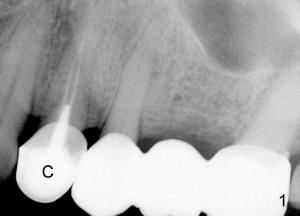
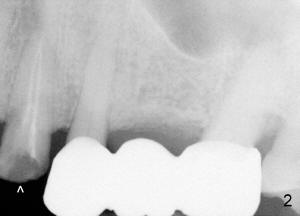
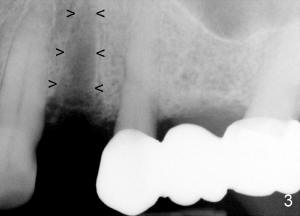
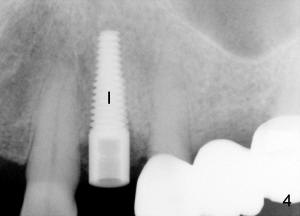
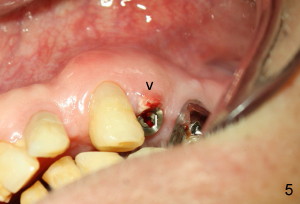
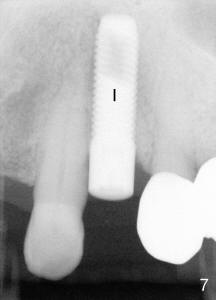
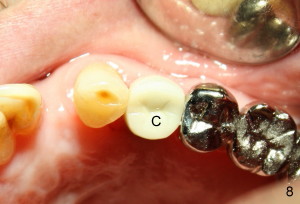
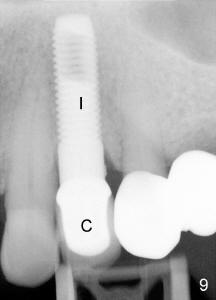
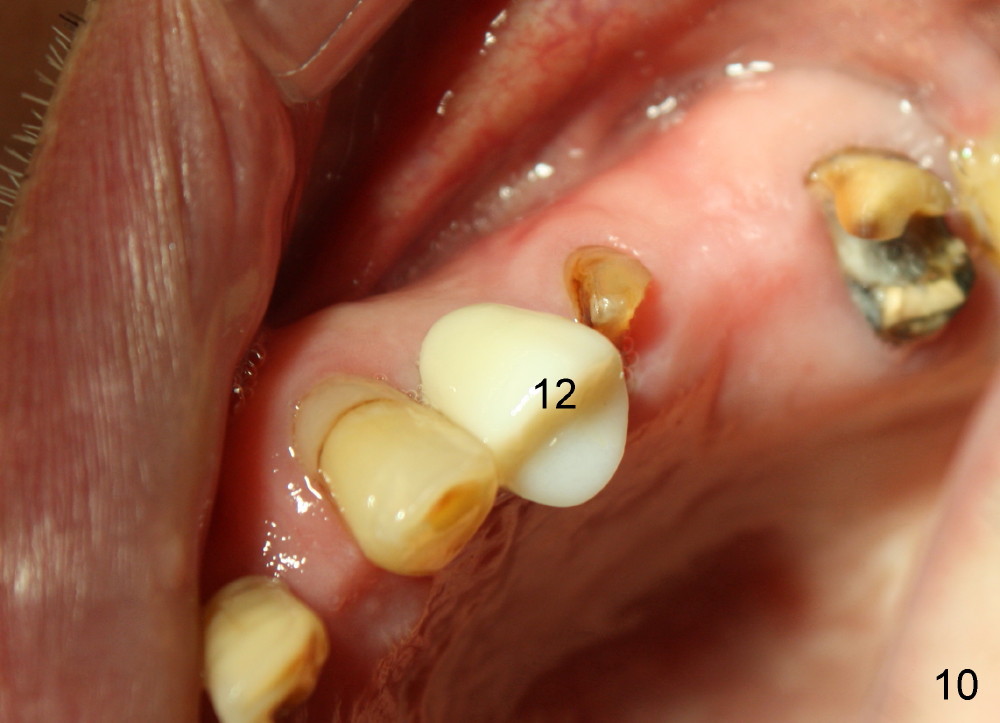

 |
 |
 |
 |
 |
|
 |
 |
 |
 |
 |
Why Does Implant Fail?
Implant seldom fails. If it does, it is easy to fix. Mr. Wei's (82 years old) old crown (Fig.1: C) breaks off. The remaining tooth is difficult to save (Fig.2: arrowhead). One month after extraction (Fig.3 arrowheads: healing socket), an implant is placed (Fig.4: I). Two weeks later, an abscess (Fig.5: A) develops around the implant. Finally the implant comes out by its own. Two to three months later, a new implant is placed (Fig.6: I) without much bleeding. No suture is used. This time implant is larger and longer than before (compare Fig.4 and 7, at the same magnification). The shape of the implant also changes, from tapered to cylindrical, increasing surface area. This time the implant stays tight. Eight months later, a new crown is cemented (Fig.8,9: C).
Implant may fail early or late. This case of early failure is probably partially due to the age of the patient. Healing is slow when we get old. The first implant is probably placed too soon. It is also too small (compare the size of the socket with that of the implant, Fig.3,4). However, failure of implant is not a big deal. After it comes out, the socket will heal. We can place implant again. Usually the second trial is successful.
It seems to last. Two years and 8 months later, the implant is still in function (Fig.10,11: #12), while the neighboring bridge is falling down.
Xin Wei, DDS, PhD, MS 1st edition 07/24/2011, last revision 04/20/2014